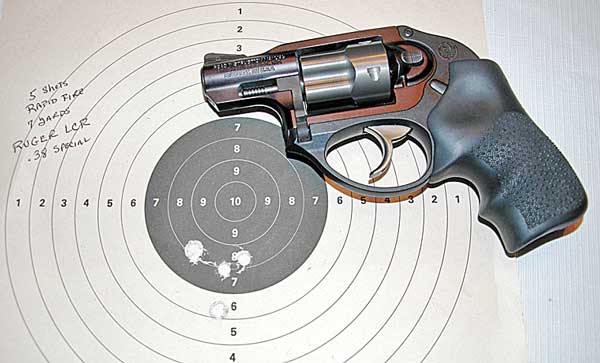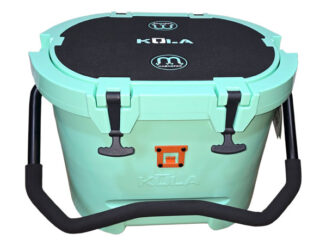
Nothing makes a better personal self-defense handgun than a snub-nosed revolver. For concealability and dependability, you simply cannot beat one of the little wheelguns. If you are going to carry a semi-auto, particularly one of the popular subcompacts, you’d better practice with it, or you will experience cycling problems that will get you killed.I base this observation on training thousands of students over the years — and knowing how little most people will practice once they complete a training course. I simply cannot recommend a semi-auto to an occasional shooter. A revolver works — everytime, anywhere.
Over the years, I’ve owned several versions of small .38 Special revolvers, most with five-shot cylinders and 2-inch barrels.
There was one nice little six-shot Colt Detective Special that some heathen stole — may he rot wherever — but most of these have been Smith & Wessons, known collectively as “Chief’s Specials.”
Since my last one was commandeered by my college-aged daughter, I was without a small, easily concealed .38 Special, and was in the market for another.
Thus, when a marketing representative for Ruger asked if I would be interested in testing their newest addition to their line, the Lightweight Carry Revolver (LCR), I saw the opportunity to do a test and perhaps fill a gaping hole in my arsenal. Not only do I prefer carrying a small revolver, but I needed one for students to try in my concealed-carry permit courses.
I didn’t expect to like the gun as much as I do.
Almost identical in size and weight to a Smith & Wesson Airweight revolver, this is a completely different handgun from a small S&W.
One of the most brilliant firearms engineers ever born, Bill Ruger left his imprint and flair for design on the company that bears his name, and each year his engineering staff lives up to the legend he bequeathed them. This year, they did it with the LCR.
This revolver weighs in at 13.5 ounces with an aluminum barrel/cylinder upper assembly. But the innovation comes in with what most folks call the frame, and Ruger calls the fire-control housing.
This lower assembly is molded from a tough polymer, just like the “plastic” grip/frames introduced famously by Glock, and now commonplace in the design catalogs of almost every major pistol manufacturer. But up until now, no one thought of making a revolver out of injection-molded polymer.
Besides the obvious revolutionary design in polymer, the frame contains no sideplates — the trigger and fire-control mechanisms are completely encapsulated in the molded polymer frame.
The gun carries an ergonomic and very comfortable set of rubber grips with a Hogue Tamer insert. The grips completely surround the lower portion of the polymer frame so the shooter’s hand does not touch the backstrap of the frame.
The deadening qualities of the polymer coupled with the exceptional grip design make for a small revolver that is extremely comfortable to shoot.
Also reducing the size of the gun in width and weight is the stainless-steel cylinder. The unusual design of the cylinder has scallops relieving the metal from most of the length of each chamber, making for the smallest .38 Special cylinder on the market, and one with sidewalls so thin, you would swear no +P ammo should be fired in it. But there it is, handsomely imprinted on the side of the barrel — “38 SPL +P.”
The trigger, as with all small revolvers, is heavy. But it is also one of the smoothest factory triggers I have ever felt on a small-framed revolver.
At slightly over 10 pounds, the trigger pull is practically liquid in its smoothness. I found myself quickly learning to “stage” the trigger, pulling it back to a perceptible “notch” where the sear is just beginning to break, then stopping and lining the sights up perfectly before releasing the hammer with just a smidgeon more pressure.
After a couple of boxes of shells, I decided to try my hand at rapid-fire.
Setting a standard 3.5-inch NRA Bullseye target at 7 yards, I lined up the pleasingly large (for fixed sights) sighting groove on the large, coarse front sight, and started rapid firing as fast as I could sight and pull the trigger.
The picture shows the result — I put five shots in less than 1.5 inches in about seven seconds. Certainly not Master Class shooting, but not bad for me, anyway.
The smooth trigger and large sights allowed me to shoot several similar groups before I quit.
I hasten to add I was using lighter target loads to conduct these tests.
I later went to +P self-defense loads to try them, and the best advice I can give you here is don’t introduce a beginning shooter to the sport using this gun and those loads.
As with any ultra-lightweight handgun, the recoil and muzzle blast are — well, just don’t do it. Save those rounds for carry for self-defense.
Pluses on this innovative gun are all the accessories that work with J-frame S&W will work with this revolver. My plethora of H&K five-shot speed loaders, various ankle, clip-on and slide-on holsters all work with this one.
The one minus I can find is the “reset” time — the trigger has to return full-length to its original position when released after firing to reset and begin the cycle again. I could see a person attempting to fire too fast under stress, short-stroking the trigger, and losing a shot. The reset distance on a S&W is much shorter, re-engaging the trigger with only about half the distance on the return. This feature has been mentioned in other articles on the gun, but is a relatively minor worry considering the ease of carry, smooth trigger pull and good control offered by the gun’s design.
I carried an Airweight in my boot for years as a backup gun when I worked uniform patrol. This gun fits just as well, and the grips actually fit my hand even better.
I guess the ultimate compliment is my wife and daughter both loved the little gun, and my daughter actually tried to trade me out of the Ruger by offering to give back the Airweight. But upon consideration of the almost competition-slick action on the Airweight, she digressed — and I get to keep and shoot an exceptional revolver, letting my students enjoy a new version of an old idea.
Read more guns, shooting and politics at Gordon Hutchinson’s blog: www.theshootist.net.
Hutchinson’s newest book, written with Todd Masson, is The Great New Orleans Gun Grab, a searing expose’ of the scandal of gun confiscations in New Orleans in the aftermath of Hurricane Katrina. It is available online at www.neworleansgungrab.com.
Hutchinson’s first book, The Quest and the Quarry, is a coming-of-age tale of a line of trophy bucks and the youth of a farming family who hunt them. It is available at www.thequestandthequarry.com.
Both books have been chosen Outdoor Books of the Year by the Southeastern Outdoor Press Association, and are available from the publisher by calling (800) 538-4355.


